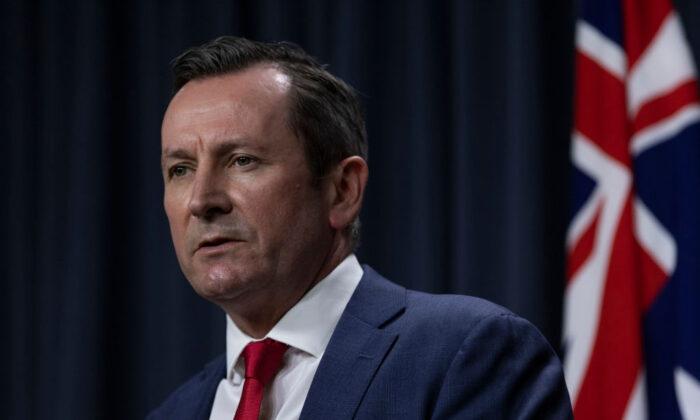Western Australia will remove its hard border closure on March 3 and allow interstate travel, with the state government admitting that rapidly growing Omicron cases were becoming harder to control.
Western Australia is the last state to release its border controls as other parts of the country begin to open up and ease restrictions.
New compulsory measures include mask mandates indoors and a 2-square-metre distancing rule for some venues, including places of worship and hospitality venues.
Existing proof of vaccination requirements will remain, including for most of the state’s workforce, visitors to hospitals and aged care facilities, and health, entertainment, fitness; and hospitality venues.
After recording a total of 724 actives cases, including 194 locally transmitted cases on Feb. 18—the highest number of daily cases the state has experienced since the beginning of the pandemic—WA Premier Mark McGowan said the time had come to open the borders.
“While this will be welcome news for many families, the introduction of quarantine-free travel will naturally mean there will be a greater spread of the virus in WA,” McGowan said in a Facebook post.
“At the same time, it is evident that our daily case numbers are accelerating,” he continued.
“Unfortunately now, the current size and pace of the outbreak will continue to accelerate, and in order to avoid the worst outcomes that we have seen over east, we will need to introduce some additional public health and social measures.”
The state had initially planned to reopen borders on Feb. 5 but backflipped on its decision after the spread of Omicron on Australia’s east coast.
McGowan defended the decision to delay reopening borders, explaining that the move had given the state ample opportunity to prepare for Omicron by improving rates of vaccination amongst children and adults, as well as controlling the flow of visitors by allowing residents and relatives to return.

“Four weeks ago, on January 20, we took the difficult decision to delay Western Australia’s full border opening,” McGowan said in a separate Facebook post.
“It was a tough call—but it was also the right call for our State. Proceeding with the original plan and dropping our borders at the height of the east coast Omicron outbreak would have been a complete unforced error,” he said.
“In the four weeks since that announcement: 34,000 people safely returned to WA. We have driven up our vaccination levels, with our third dose rates soaring from 25 per cent then, to more than 55 per cent today, and expected to climb to 70 per cent by March 3.”
“On top of that, first doses for children aged five to 11 have tripled from 13 per cent to 45.7 per cent, and thankfully, the east coast Omicron outbreak appears to have peaked and is declining.”
“Our promised review has now been completed. And it is clear that the situation has improved. It is plain to see that four weeks of caution, has paid dividends. It is now far safer to relax our hard border settings.”





